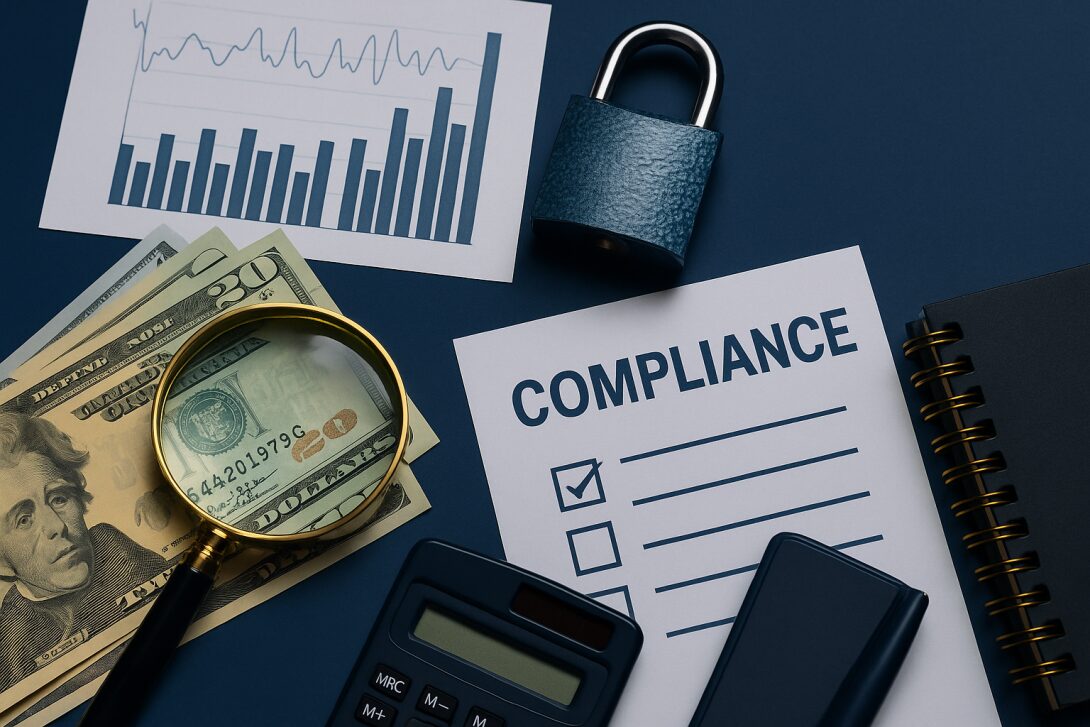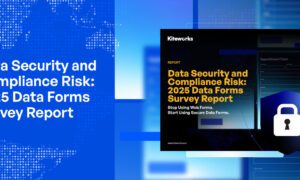Think AML compliance doesn’t apply to you because you’re not a bank? Think again. Just a few clicks to the wrong account or a client with a fake identity, and suddenly your phone rings, and it’s the Financial Analytical Office on the line. AML compliance isn’t just a corporate scarecrow; it’s an everyday reality for real estate agencies, currency exchanges, and investment platforms alike. Read our article to find out what you need to know—and more importantly, do—to stay safe and on the right side of the law.
If you operate in the financial sector, run a crypto exchange, or manage a real estate agency, you’ve probably come across the term AML compliance. These days, running a business isn’t enough—you also need to know how to protect it from being misused for money laundering. That’s where AML comes in. But what exactly does it mean, what are your obligations, and why is it so crucial to take it seriously?
What Is AML Compliance?
AML compliance means having a system in place to detect and report attempts at money laundering. This includes:
- customer due diligence,
- transaction monitoring,
- proper record-keeping,
- and timely reporting of suspicious activity.
It’s not just a legal obligation—it’s also a way to protect your reputation and avoid fines. In practice, strong anti-money laundering compliance means actively contributing to the fight against financial crime, safeguarding the integrity of the financial system, and reducing the risk that your business will be used as a vehicle for illegal activities.
Why Is AML Compliance Important?
Without effective AML compliance, institutions face not only financial losses but also reputational damage and legal consequences. For example, in 2024, TD Bank was fined USD 3 billion for inadequate AML controls, which led to the departure of several top executives.
4 Things You Must Do If You’re Serious About AML Compliance
1) Know Your Customer—KYC
You must thoroughly vet every client, who they are, where they’re from, and where their money comes from. Without this, you can’t properly assess whether they pose a risk. Modern tools like identity verification systems, biometrics, or registry integrations can support this process. In the context of anti-money laundering compliance, KYC plays a critical role—it’s not just a formality but a fundamental preventive measure.
2) Monitor Transactions
It’s not enough to check a client only at the beginning. You need to continuously monitor all their transactions. If someone sends repeated smaller amounts or changes their behavior patterns, it should raise a red flag. Such cases often reveal attempts to bypass limits or hide the origin of funds. AML compliance allows you to systematically identify and address these risks on time.
3) Conduct Your Own Risk Assessment
This is the foundation of any compliance plan. Take the time to analyze: where are your biggest vulnerabilities? Do you handle cash, cryptocurrencies, or serve clients from high-risk countries? When you know what could pose a problem, you can tailor your internal rules and invest where it’s needed most. An effective risk assessment in the AML context saves you time, money, and stress.
4) Train Your Team
Your people are the first line of defense. They need to recognize suspicious behavior and know how to respond. Without regular training, they won’t know how to properly fill out a report or how to handle a client acting unusually. Managing money laundering risks is a team effort, and it simply doesn’t work without well-trained colleagues.
Table: Key Figures and Statistics in AML and Compliance for 2025
|
Topic |
Value/Statistic |
Relevance to AML Compliance |
||
|---|---|---|---|---|
|
Use of AI/ML in AML |
62% in 2023 → 90% in 2025 |
A massive increase shows that automation is becoming the standard in fighting financial crime. |
||
|
Reduction of False Positives |
Up to 40% |
Increases the efficiency of monitoring and saves human resources. |
||
|
RegTech Market Size |
$22 billion by mid-2025 |
|
||
|
Automation of KYC Processes |
Over 70% in 2025 |
|
||
|
Cybercrime in Banking |
$4.1 billion in losses in 2023 |
Highlights the need to integrate AML systems with cybersecurity efforts. |
||
|
Reduction of False Alerts and Cost Savings Through AI |
False positives: –45%; savings: +50% |
AI saves both time and money while improving the accuracy of detecting suspicious activities. |
AML Compliance Is Not a Burden, but a Shield
At first glance, AML compliance may seem like a bureaucratic hassle or a complex legal construct. In reality, it’s your safety net—protecting you from fraud, reputational damage, and financial penalties. And the sooner you start taking it seriously, the better for both you and your clients.
Modern AML systems now leverage advanced data analysis and automation, helping businesses detect suspicious behavior patterns faster, reduce false alarms, and respond in real time. Learn more here.



































